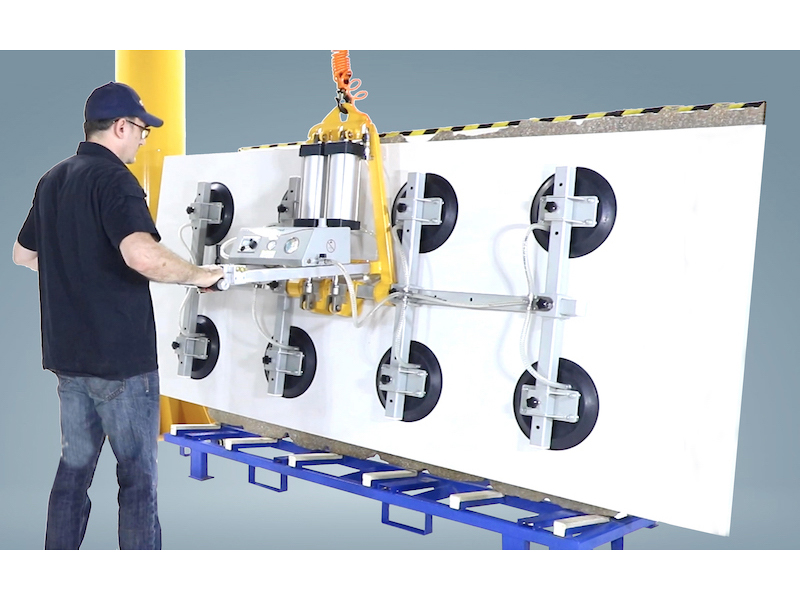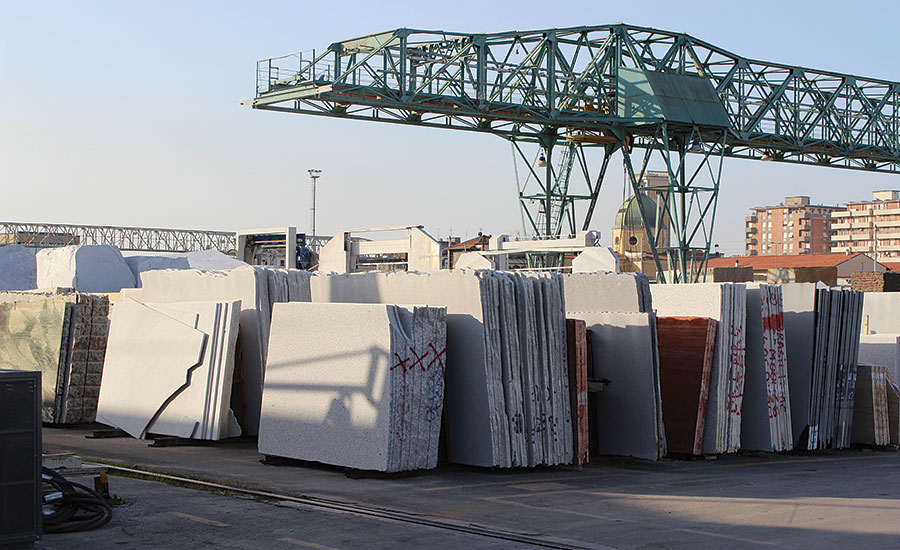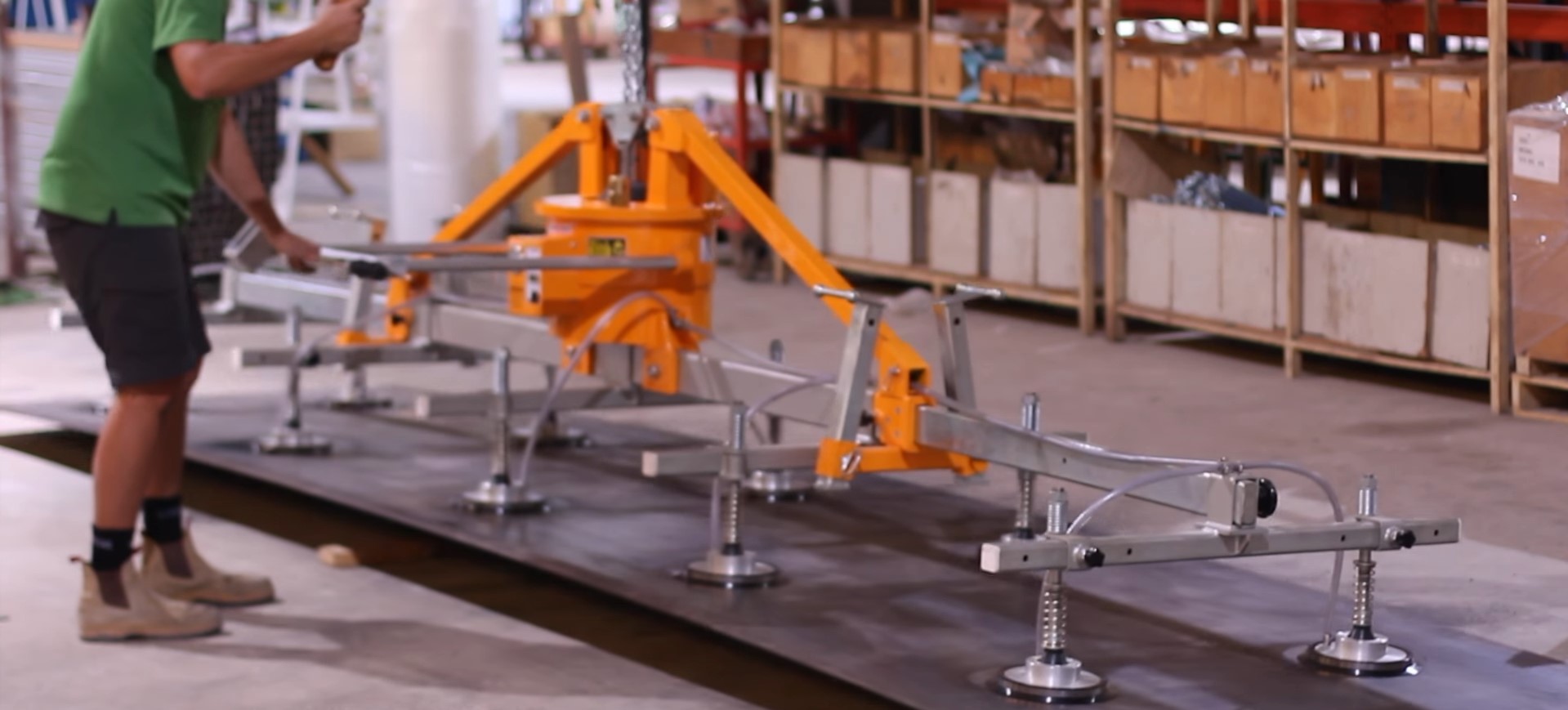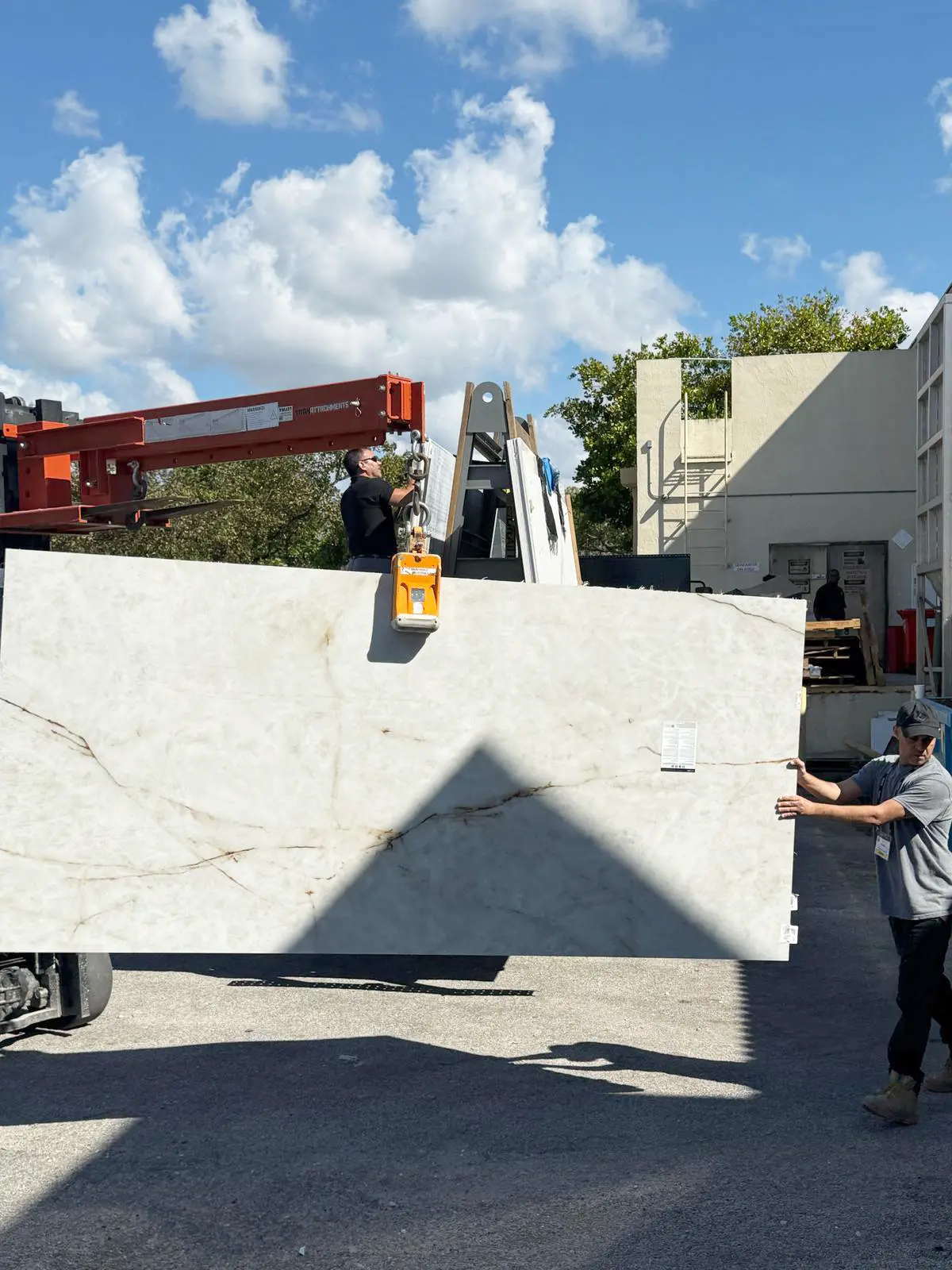What is Vacuum Lifting Equipment?

Why Choose Vacuum Lifting and What is Vacuum Lifting Equipment Used For?
Vacuum lifters are essential tools across various industries due to their ability to handle heavy, delicate, or awkward loads with precision and safety. They are widely used for:
Marble and Granite Slabs: Safely lifting and positioning large stone slabs during fabrication and installation.
Natural Stone & Rock Handling: Especially for paving stones, blocks, and other heavy masonry materials.
Glass Panels: Precision handling of glass sheets in the glazing, window, and façade industries.
Sheet Metal: Moving large steel, aluminum, or iron sheets in fabrication workshops.
Industrial Manufacturing: Lifting components in the steel, metal, and construction industries with minimal manual effort.
Vacuum lifting improves productivity, worker safety, and material integrity by reducing physical strain and preventing damage to delicate surfaces. Whether in a stone fabrication shop, construction site, glass manufacturing facility, or steel plant, your product range offers reliable solutions to meet every lifting challenge.
Key Features to Look For in Vacuum Lifting Equipment
When selecting vacuum lifting equipment, it's important to prioritize safety, efficiency, and compatibility with your specific materials and operations. These are the essential features to evaluate:
Vacuum lifters are powered in different ways, depending on work environment:
- Battery-powered: Ideal for mobile or off-grid use
- Electric-powered: Reliable for indoor production lines
- Pneumatic (air): Used in facilities with existing compressed air systems
For industries like glass, sheet metal, or stone fabrication, the ability to tilt or rotate loads can improve ergonomics, reduce handling time, and enhance placement precision.
Look for built-in safety mechanisms such as:
- Vacuum loss alarms
- Fail-safe check valves
- Dual circuit systems for redundancy
- Backup power for emergency retention
These are often required under national safety guidelines.
Types of Vacuum Lifters
Vacuum lifting equipment comes in a variety of configurations, each tailored to specific materials, work environments, and lifting needs. Here’s a breakdown of the main types of vacuum lifters in your range:
Manual Vacuum Lifters
These are compact, lightweight devices operated by hand, often ideal for smaller loads or quick, flexible applications. They’re commonly used in workshops, warehouses, or at job sites where powered lifting isn’t feasible. Despite being manual, they offer strong suction and safe handling without the need for slings or clamps.
Ideal for: Glass panes, plastic sheets, small metal plates, or quick on-the-go lifting tasks.
Battery-Powered Vacuum Lifters
Battery-powered models offer cordless freedom and are perfect for mobile use where electrical outlets or air supplies are limited. With rechargeable batteries, they combine portability with high lifting capacity and extended operation time. Some models also include features like tilt and rotation for added control.
Ideal for: Construction sites, mobile workshops, or indoor applications with limited infrastructure.
Forklift- or Crane-Mounted Systems
Designed for integration with forklifts, cranes, or overhead hoists, these heavy-duty vacuum lifters are built for large-scale industrial lifting. They offer hands-free operation and are suitable for repetitive lifting of heavy or bulky materials. Many include adjustable arms, multi-pad systems, and safety alarms.
Ideal for: Steel fabrication, logistics warehouses, shipyards, or manufacturing plants.
Glass and Window Lifters
Specialized suction lifters for delicate and smooth materials like glass, windows, or mirror panels. They provide high suction with soft pads that prevent scratching or shattering. Most models include tilt and rotation features to assist in precise installation or placement.
Ideal for: Window manufacturing, glass handling, façade installation, and interior glazing.
Heavy-Duty Steel Plate Lifters
Engineered for industrial-scale lifting of thick steel plates, metal sheets, or structural components. These units deliver high suction force and stability, even when handling rough or oily surfaces. Their rugged construction ensures safety and performance in tough environments.
Ideal for: Shipbuilding, structural steel, metal service centers, and large-scale machining.
Stone Slab Lifters
Purpose-built for materials like granite, marble, quartz, and engineered stone. These vacuum lifters are designed to grip heavy, polished slabs without causing chips, cracks, or surface damage. Many feature multiple suction zones to accommodate slabs of different shapes and sizes.
Ideal for: Stone fabrication shops, countertop manufacturers, and building contractors.

Applications by Industry
Vacuum lifting systems are versatile tools that bring value across a wide range of industries. By enabling safe, ergonomic, and damage-free handling of heavy or fragile materials, vacuum lifters significantly improve both productivity and worker safety. Here’s how different industries rely on vacuum lifting equipment:
Stone & Granite Industry
Stone slabs—especially polished granite, marble, or quartz—are heavy, fragile, and expensive to replace if damaged. Vacuum lifters allow fabricators and installers to lift, rotate, and place slabs with minimal manual handling. The suction technology distributes weight evenly, reducing the risk of cracks, chips, or surface scratches during transport or installation.
Common Uses:
- Moving countertops in fabrication shops
- Installing stone panels on-site
- Loading/unloading slabs in storage racks
Glass Industry
Handling glass requires extreme care to avoid scratching, cracking, or shattering. Vacuum lifters provide a secure, stable grip on smooth glass surfaces without mechanical clamps. Many lifters also offer tilt and rotation to assist with precise installation of windows or panels.
Common Uses:
- Glazing and window installation
- Transporting large panes in manufacturing lines
- Automated handling in glass processing facilities
Metalworking/Steel Industry
Traditional lifting methods using hooks or chains can deform or scratch metal surfaces. Vacuum lifters are an ideal alternative for safely handling metal sheets, steel plates, and other ferrous or non-ferrous components. They support both flat and slightly curved materials, improving handling efficiency and reducing damage.
Common Uses:
- Feeding laser cutters and CNC machines
- Moving heavy steel plates in fabrication shops
- Handling oily or hot sheets in production environments
- Warehouse & Logistics – Efficient loading/unloading and picking.

Discover the Right Vacuum Lifter for Every Application
When it comes to material handling, one size doesn’t fit all. Each industry—from construction and manufacturing to glass and metalwork—has unique requirements. That’s why choosing the right vacuum lifting solution is essential. Below is a breakdown of key lifter types and how they align with various applications:
🔹 General & Heavy-Duty Vacuum Lifters
AVLP Vacuum Lifters & AVLP Pro: Ideal for heavy stone slabs and sheet metal.
AVLP3/3750, AVLM2/500, AVLB4: Designed for extremely heavy-duty lifting in industrial environments.
Petrol-Fuelled Vacuum Lifters (APVL1000): Excellent for remote or off-grid job sites.
🔹 Glass Lifter Equipment
AVGLP & AVGLM2/200: Battery or electric-powered vacuum glass lifters for smooth, scratch-free handling.
DC & Electric Vacuum Glass Lifters: Reliable solutions for vertical or overhead glazing.
180º Rotation Glass Lifters: Enhance maneuverability for complex glass installations.
🔹 Paving & Block Lifters
Vacuum Block Lifters, APSL, AVPL40, AVBLH380: Specifically designed for lifting and placing concrete pavers, blocks, and stones.
Fork Mounted Attachments: Quickly convert forklifts into vacuum lifting machines.
🔹 Tube Lifting Systems
AVTL1, AVTL2, AVTL/CF3: Vacuum tube lifters for continuous, ergonomic lifting of repetitive loads.
🔹 Compact & Handheld Lifters
Hand Vacuum Cup Lifters & Suction Cups: Ideal for small-scale handling of glass and metal.
AVLHP240/480: Hand-pump lifters for lightweight lifting without power.
🔹 Specialty & Support Products
Parking Stations: Safe and organized storage for vacuum lifters when not in use.
Mono Mechanical Lifters: Vacuum-mechanical hybrid designs for stone and slab handling.
Conclusion:
Vacuum lifting systems continue to transform material handling across industries—from stone and glass to sheet metal and logistics. Selecting the right equipment helps ensure workplace safety, operational efficiency, and long-term cost savings. If you have questions or need assistance finding the right solution, feel free to reach out using the form below.




